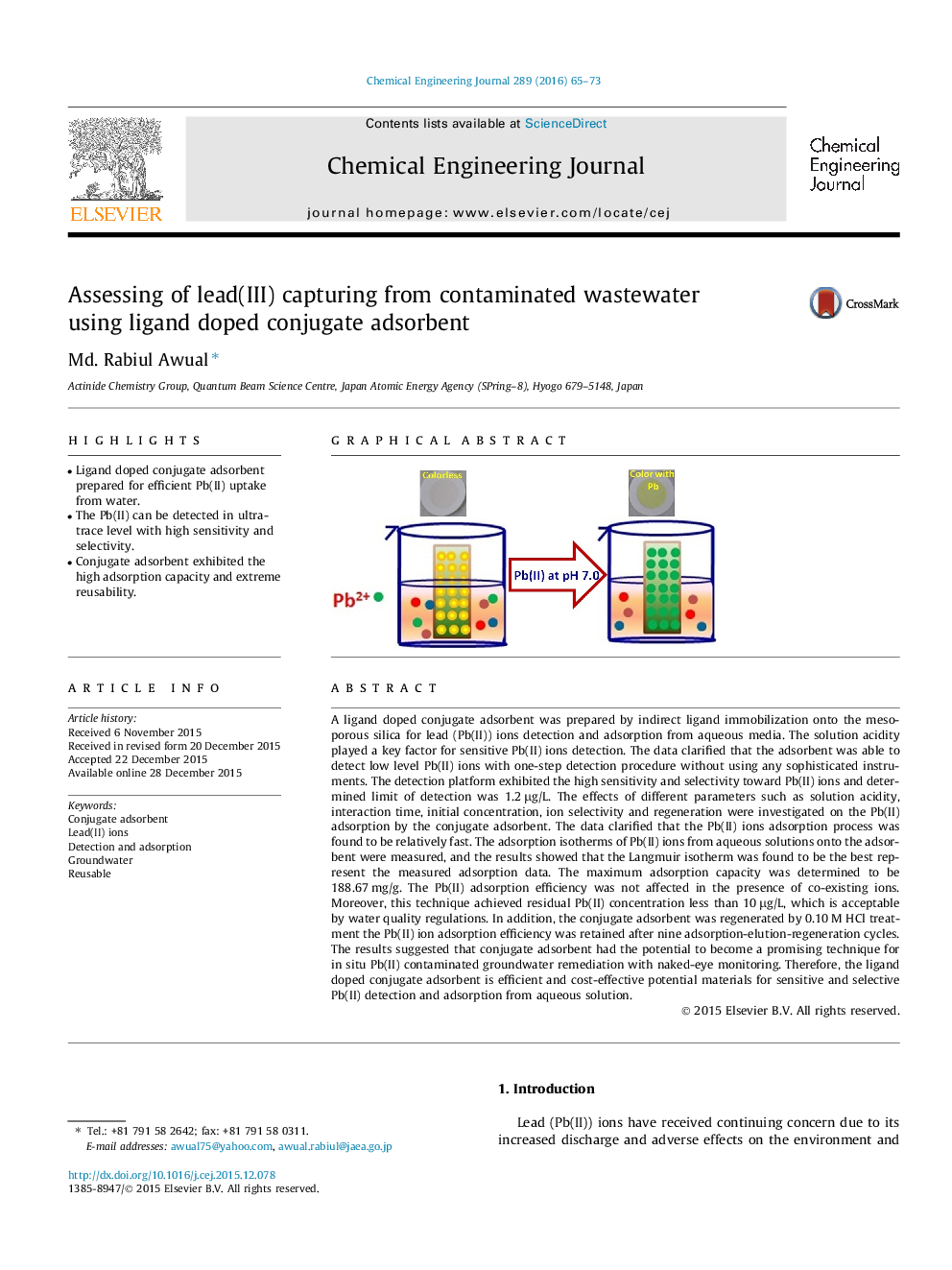| کد مقاله | کد نشریه | سال انتشار | مقاله انگلیسی | نسخه تمام متن |
|---|---|---|---|---|
| 145809 | 456352 | 2016 | 9 صفحه PDF | دانلود رایگان |

• Ligand doped conjugate adsorbent prepared for efficient Pb(II) uptake from water.
• The Pb(II) can be detected in ultra-trace level with high sensitivity and selectivity.
• Conjugate adsorbent exhibited the high adsorption capacity and extreme reusability.
A ligand doped conjugate adsorbent was prepared by indirect ligand immobilization onto the mesoporous silica for lead (Pb(II)) ions detection and adsorption from aqueous media. The solution acidity played a key factor for sensitive Pb(II) ions detection. The data clarified that the adsorbent was able to detect low level Pb(II) ions with one-step detection procedure without using any sophisticated instruments. The detection platform exhibited the high sensitivity and selectivity toward Pb(II) ions and determined limit of detection was 1.2 μg/L. The effects of different parameters such as solution acidity, interaction time, initial concentration, ion selectivity and regeneration were investigated on the Pb(II) adsorption by the conjugate adsorbent. The data clarified that the Pb(II) ions adsorption process was found to be relatively fast. The adsorption isotherms of Pb(II) ions from aqueous solutions onto the adsorbent were measured, and the results showed that the Langmuir isotherm was found to be the best represent the measured adsorption data. The maximum adsorption capacity was determined to be 188.67 mg/g. The Pb(II) adsorption efficiency was not affected in the presence of co-existing ions. Moreover, this technique achieved residual Pb(II) concentration less than 10 μg/L, which is acceptable by water quality regulations. In addition, the conjugate adsorbent was regenerated by 0.10 M HCl treatment the Pb(II) ion adsorption efficiency was retained after nine adsorption-elution-regeneration cycles. The results suggested that conjugate adsorbent had the potential to become a promising technique for in situ Pb(II) contaminated groundwater remediation with naked-eye monitoring. Therefore, the ligand doped conjugate adsorbent is efficient and cost-effective potential materials for sensitive and selective Pb(II) detection and adsorption from aqueous solution.
Figure optionsDownload as PowerPoint slide
Journal: Chemical Engineering Journal - Volume 289, 1 April 2016, Pages 65–73